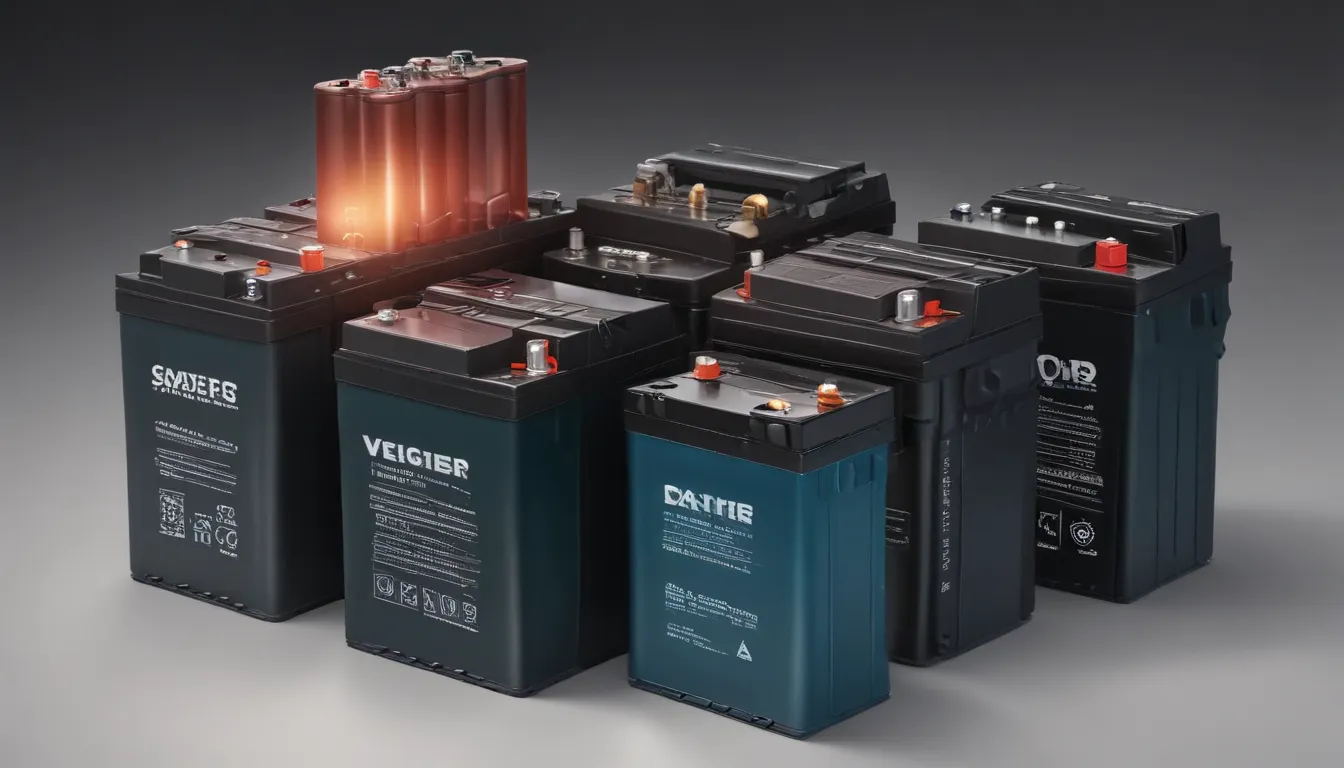A Note About Images: The images used in our articles are for illustration purposes only and may not exactly match the content. They are meant to engage readers, but the text should be relied upon for accurate information.
Lead-acid batteries have been a longstanding powerhouse in the world of energy storage, serving a multitude of applications with their reliable power. While commonly known for their use in vehicles and backup systems, lead-acid batteries harbor a trove of surprising facts that are often overlooked. In this enlightening article, we will unveil the remarkable characteristics and versatility of lead-acid batteries, shedding light on their significance in various industries and their impact on the environment. Join us on a journey through the fascinating realm of lead-acid batteries as we unearth hidden gems that make them stand out among other battery technologies.
Key Takeaways:
- Lead-acid batteries, dating back to 1859, boast versatility, eco-friendliness, and longevity with over 500 recharge cycles. They power a wide range of applications, from vehicles to renewable energy storage, contributing to sustainability and the circular economy.
Unveiling the Origins of Lead-Acid Batteries
The inception of lead-acid batteries traces back to 1859 when French physicist Gaston Planté first invented them. Remarkably, these batteries have withstood the test of time, enduring over 160 years as a resilient and indispensable energy storage solution across diverse industries. Despite their age, lead-acid batteries continue to play a vital role in powering various applications worldwide.
The Energizing Power of Lead-Acid Batteries
One of the most surprising aspects of lead-acid batteries is their exceptional energy density. Despite their bulkier size and weight, these batteries possess the capability to store and deliver substantial amounts of energy efficiently. This quality makes them well-suited for applications that demand a reliable and enduring power source, such as automotive vehicles and backup systems.
The Green Side of Lead-Acid Batteries
Contrary to misconceptions, lead-acid batteries exhibit eco-friendliness when properly maintained and recycled. With a recycling rate exceeding 99%, the lead content in these batteries is highly recyclable, contributing significantly to global efforts in waste reduction and sustainability. They stand out as one of the most recycled consumer products worldwide, championing environmental preservation and resource conservation.
The Cost-Effective Choice: Lead-Acid Batteries
Renowned for their affordability, lead-acid batteries represent a cost-effective option for numerous applications. Compared to advanced battery technologies like lithium-ion, lead-acid batteries offer a lower initial cost. Moreover, their extended lifespan and high energy density further enhance their overall cost-effectiveness, making them a preferred choice in a budget-conscious world.
The Resilience of Lead-Acid Batteries: 500+ Recharge Cycles
An impressive feature of lead-acid batteries is their rechargeability, capable of enduring over 500 recharge cycles. This attribute ensures a dependable and long-lasting power supply, rendering lead-acid batteries ideal for applications that necessitate frequent recharging, such as renewable energy storage systems. Their resilience sets them apart as a versatile and enduring energy storage solution.
Versatility Knows No Bounds with Lead-Acid Batteries
Lead-acid batteries exhibit remarkable versatility, finding applications across a spectrum of industries. They serve as a primary power source for vehicles ranging from cars to motorcycles, as well as in critical systems like uninterruptible power supply (UPS) setups, telecommunications, and renewable energy storage. Their ability to deliver robust starting power makes them a preferred choice in diverse applications.
The Prolonged Power of Lead-Acid Batteries: Slow Self-Discharge Rate
A notable trait of lead-acid batteries is their slow self-discharge rate, distinguishing them from other battery technologies. With minimal self-discharge compared to counterparts, lead-acid batteries can sustain their charge over extended periods of inactivity. This feature deems them suitable for backup power scenarios and applications where reliability is paramount.
The Air They Breathe: Importance of Proper Ventilation
Given the chemical reactions within lead-acid batteries, adequate ventilation is crucial to ensure safe operation. During the charging process, these batteries emit small amounts of hydrogen gas that must be effectively vented to prevent gas accumulation. Proper ventilation not only averts the risk of potential explosions but also aids in dissipating heat generated during battery operation.
In Conclusion: The Evergreen Appeal of Lead-Acid Batteries
In the vast landscape of energy storage solutions, lead-acid batteries stand tall as enduring pillars supporting an array of applications. Through our exploration of surprising facts about lead-acid batteries, we’ve uncovered their remarkable history, sustainability, and universal adaptability. From their impressive recycling rates to their robust starting power, lead-acid batteries continue to play a pivotal role in our daily lives, embodying reliability and longevity. As technology advances, the evolution of lead-acid batteries promises to meet the dynamic energy needs of the future, further solidifying their indispensable status in the modern world.
FAQs:
Q: Are lead-acid batteries safe for use?
A: When handled and utilized correctly, lead-acid batteries are safe. It is imperative to adhere to proper safety precautions as they contain toxic components and emit explosive gases.
Q: Can lead-acid batteries undergo recycling?
A: Yes, lead-acid batteries exhibit one of the highest recycling rates among commercial products. The lead and plastic components are recyclable, contributing to the production of new batteries and other goods.
Q: What is the typical lifespan of lead-acid batteries?
A: The longevity of lead-acid batteries varies based on factors like usage, maintenance, and environmental conditions. With adequate care, they can last anywhere from three to five years or even longer.
Q: Are lead-acid batteries rechargeable?
A: Certainly, lead-acid batteries are designed for rechargeability, allowing for repeated recharging cycles and prolonged usage.
Q: Are lead-acid batteries the sole energy storage option available?
A: While lead-acid batteries have been predominant, alternative options like lithium-ion batteries have emerged. These alternatives offer superior energy density and lifespan at a higher cost.
Embark on a journey beyond lead-acid batteries and explore intriguing topics that ignite curiosity. Delve into the realm of eco-friendly transportation alternatives by discovering the best electric scooters presently available—a fun, efficient mode of travel devoid of fossil fuel dependence. For enthusiasts of outdoor escapades or individuals seeking reliable backup power, our guide on top-rated portable power stations unveils models that blend performance, portability, and value for off-grid energy requirements.
Your Feedback Matters:
As we strive to deliver trustworthy and captivating content, your feedback is critical to our mission. Every fact shared on our platform is contributed by individuals like yourself, fostering a rich tapestry of insights and knowledge. Thorough reviews by our dedicated editors ensure the accuracy and authenticity of the information we disseminate. Trust in our unwavering commitment to quality and exploration as you engage in learning and discovery alongside us.






